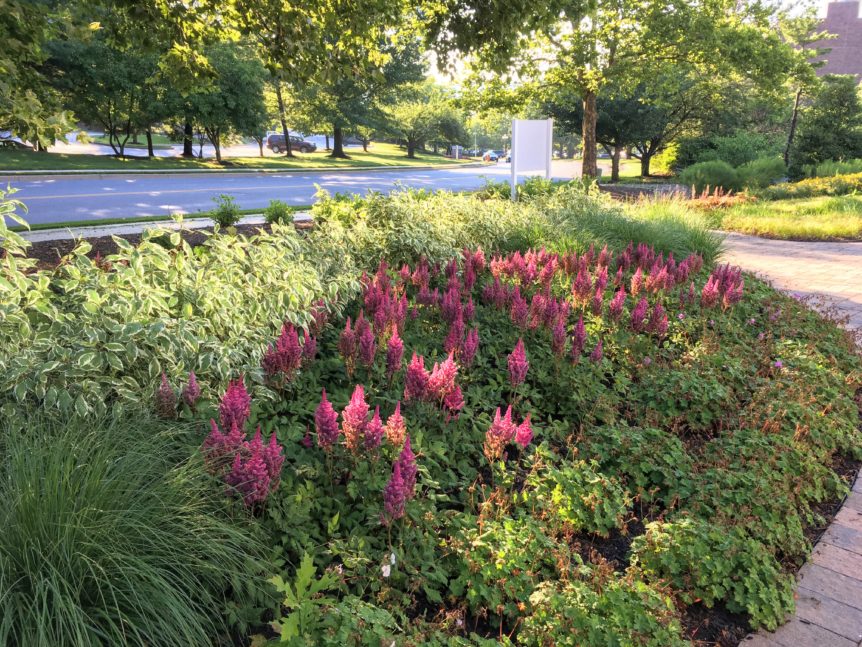Certain plants play well together better than others. We like to use a strategy called “companion planting” to optimize on the aesthetics, and specific needs of one plant by pairing it with a good companion plant. These species must both be able to tolerate the same soil, sunlight and nutrient conditions without competing with each other.
The goal is that both species benefit by attracting desired pollinators, deterring pests and getting the desired soil nutrients and acidity. Visually, the plants would bloom at different times and offer different, yet complementary colors, plant size and dimensions, and textures. This is a great tactic to encourage healthy plant growth and develop gorgeous garden beds.
Here are some of the most popular and effective pairs to use:
- Roses and Geraniums. Both like sunny, well-drained soil. Geraniums help deter pests like aphids and beetles drawn to the roses. This is a classic pair that complete garden spaces together and offer multiple colors and shades.
- Coneflowers and Black-Eyed Susan. A summer favorite, these plants add pops of bright color and thrive in high heat, full sun, partial shade and dry soil.
- Astilbe and Hosta. These shade lovers are great for lightening up dark spots in your garden with their spires of blooms and large leaves.
- Hydrangeas and Daylilies. These two prefer moist, well-drained soil, make great border plants and offer blooms from spring through mid-summer.
- Daffodils and Amsonia. Daffodils are one of the earliest bloomers, and the Amsonia comes right behind it in the season. Amsonia helps hide the brown foliage that remains once Daffodils fade out and provides a golden yellow accent foliage in fall.
- Hibiscus and Bee Balm. These two prefer sun and moist soil and are excellent support plants for pollinators like hummingbirds and butterflies.
- Irises and Phlox. This pair loves the sun and moist soil. They provide the back-to-back showy color with the Iris spring blossom and the Phlox full summer blooms.
- Tulips and Hyacinth. These two spring plants contrast in texture with the tulip’s cup-like shape and the hyacinth’s spiky stalks of flowers. They like to be in the sun with neutral, dry soil.
- Daisies and Petunias. Both enjoy full sun and nutrient-rich soil. The Petunias bloom first in spring followed by a longer blooming season for daisies from late spring to early fall.
- Merrybells and Virginia Bluebells. This is a timeless pair with the yellow and blue color contrast while both have a distinct, wilted structure to the plant.
- Marigolds and Lavender. Marigolds are great for deterring pests like rabbits, aphids and beetles, and tolerate droughts well. Lavender offers a complementary color and thrives in the same conditions.
This list isn’t exhaustive. Some of these plants can be combined with others on this (or not listed) and thrive just fine. The key is meeting the biological needs and with creative layout of visuals.
If you’d like to discuss a landscape project, schedule an appointment with a designer today. We offer full-service landscape design and plant installation in Harford, Baltimore and Cecil Counties of Maryland.
Schedule an appointment with a designer here!
Secure your position on the calendar so you don’t have to wait!

